No doubt, some of you have Green Heron fatigue. I understand. But I need to share a few more photos with you. Please bear with me.
This is a young bird getting ready to leave for the winter. As I understand it, the bird is headed for a small lagoon in Punta Cana.

The bird may or may not return to its birthplace at Lakeside Park in Chesapeake, VA.
Some of these birds return to their natal sites the following year, but some do not. Also, some don’t breed until they’re 2 yrs. The above bird might not breed until 2022. I’m not sure I could wait that long.
These 3 younger birds watched their colony-mate take off (while considering the implications). Some, but not all, Green Herons migrate during the day.
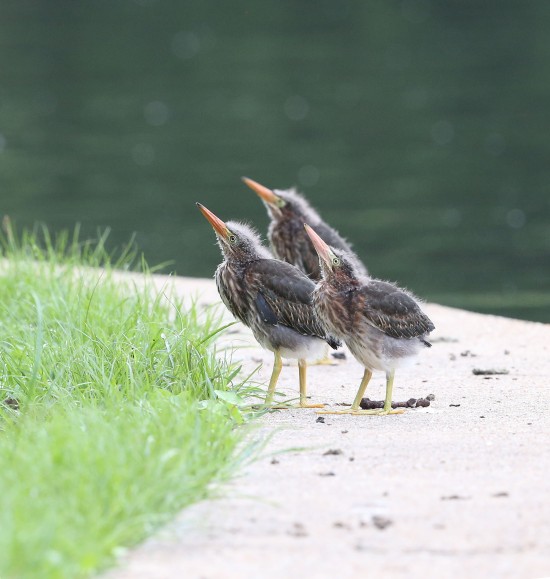
Power Lines
I mentioned in “End of Season Bird Photos and Photo Tips” that many birds (mostly passerines) perch on power lines. Power lines resemble natural perches but also provide birds with great views. Birds are continually on the watch. Remember: “The law of their lives is eternal vigilance.”
During the fall and before migrating, hundreds or even thousands of certain species—swallows, for example—will line up on these lines. The lines are safe unless a bird either touches 2 lines at once or 1 line and something else nearby.
American Kestrel
I don’t have any good photos of a passerine on a power line. But the other day while I was birding Money Point in Chesapeake, I came across an American Kestrel, the smallest American raptor (about the size of a Blue Jay, a passerine—and crow family member). I initially thought the bird was perched on a line, but it was perched on a cable. It’s possible the cable enclosed a line.
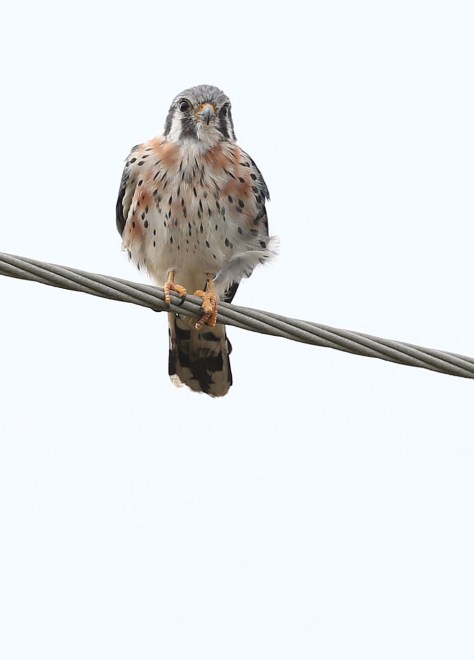
The American Kestrel is an open-country bird. And Money Point is open country, albeit of the highly industrialized kind. But still there are insects, small birds, good numbers of rodents, and many high perches. Kestrels also like great views, but for very different reasons.
One thing I like about the above photo (even though it’s slightly overexposed): It highlights how a bird grips a perch. And you can see a few of the bird’s talons (used to seize and sometimes kill prey). It’s not clear from the photo, though, that the kestrel has 3 toes that face forward and 1 that faces back (like most birds).
Osprey
The Osprey, a larger raptor, has the same kind of toe arrangement. Except, like an owl, it can rotate one forward-facing toe to the back. That then changes the arrangement to 2 forward and 2 back, which helps the bird grip and carry fish.

Now notice those talons. Here, you’ll have to imagine the bird’s 2 other toes. You’ll also have to imagine the trout’s head. Male Osprey will eat a fish’s head before delivering the fish to the nest. It appears that Osprey do this to reach and consume the brain, which has high nutritional value (and is tasty, to boot). Incidentally, kestrels will also eat small birds head first and probably for the same reasons.
Green Heron
Since we’re talking about toes and talons—and we haven’t stopped discussing Green Herons—here’s a photo of a Green Heron’s toes. Notice their thickness and the small amount of webbing, both of which enable the bird to swim (see “A Few More Photos”).
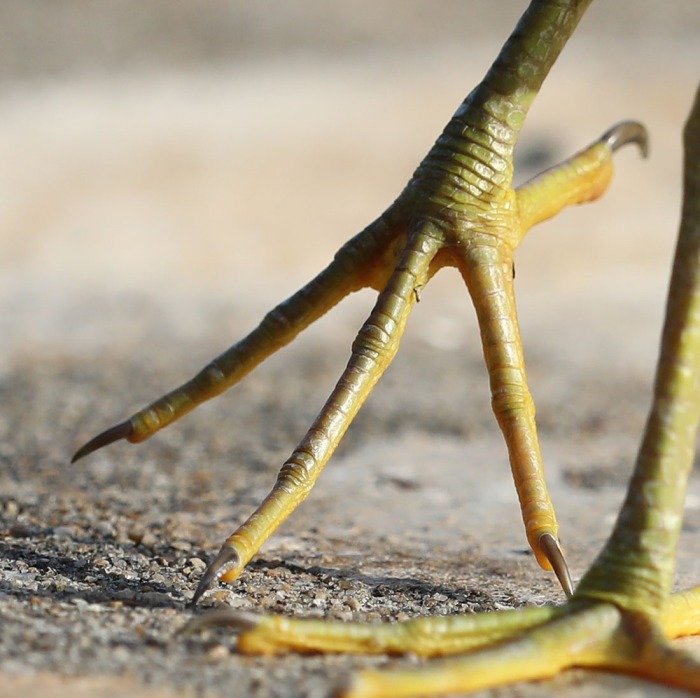
Its nails are always referred to as “claws,” never talons. The bird also never uses them to capture prey. That’s where it’s beak comes in.
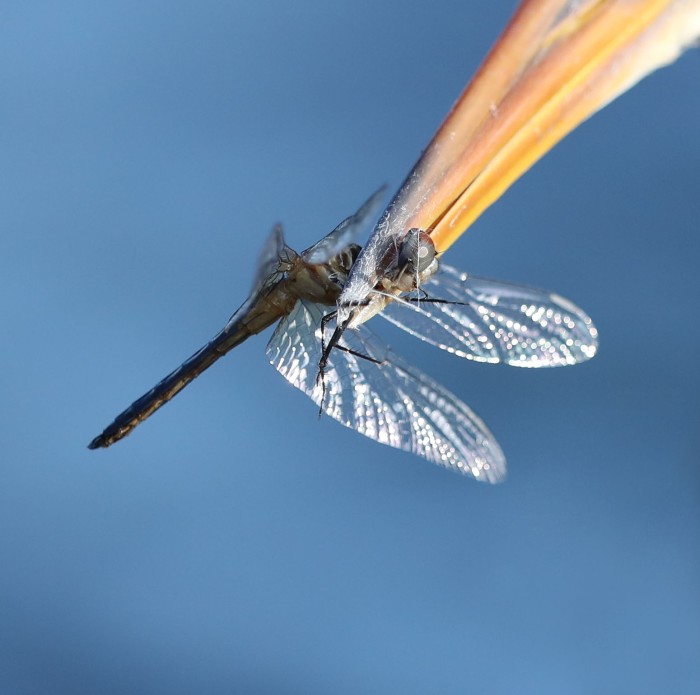
Molting
The 3 Green Herons fledglings pictured above are acquiring juvenal plumage, their first coat of “real” feathers. You can still see their natal down peeking through. Here’s a Carolina Wren that is a little further along. It’s shedding its juvenal plumage, its first coat, and is acquiring its “first winter” coat. It’s cool that you can see the gray semiplume feathers on its back, (visible because of the shedding), and that you can also see the pin feathers on its head.
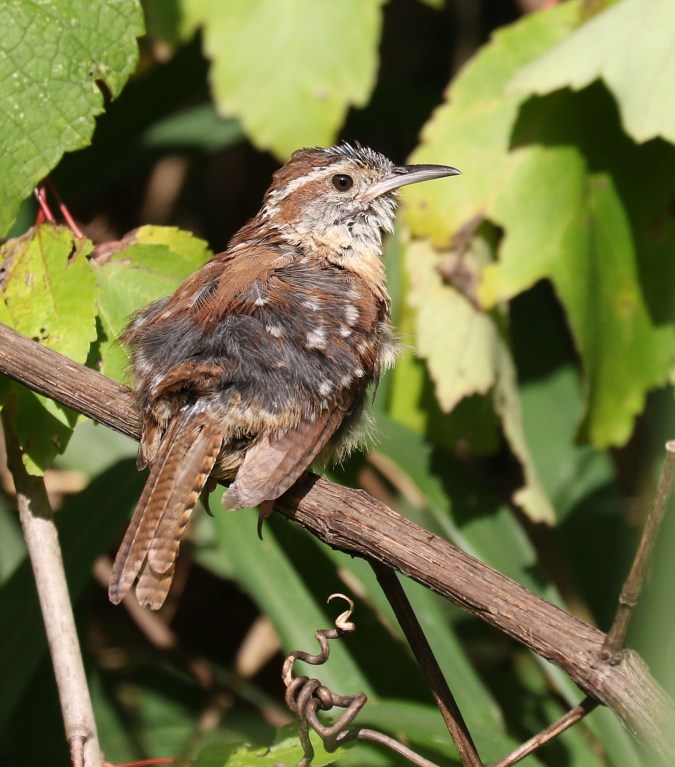
Here’s a close-up. You can more easily see the feather detail, including the pin feathers. Look closely and you’ll be able to see feathers emerging from the tops of the white sheathes. Molting isn’t a pretty affair, but it’s unquestionably an essential one.
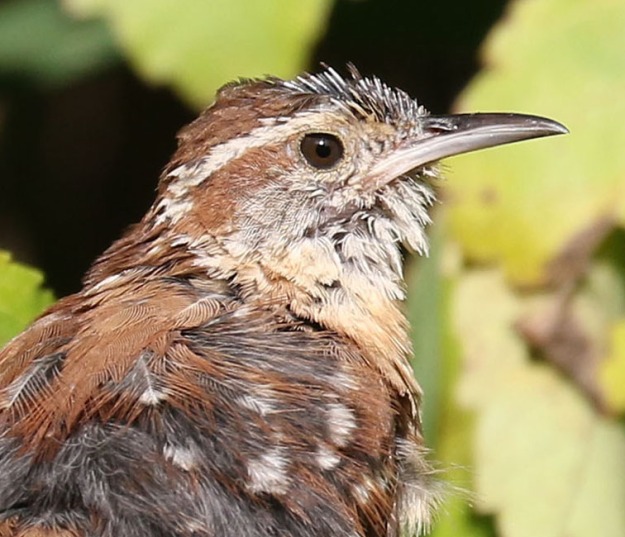
Very nicely capture! I like the 3 younger green heron bird photo, thank you for the sharing. 🙂
LikeLike
Thanks so much, and thanks for reading.
LikeLike
Interesting, as usual!
LikeLike
Thanks, Jim.
LikeLike
Enjoyed the read and photos, thanks
LikeLike
Thanks so much.
LikeLike
The green herons in your photos are precious!!
LikeLike
Thanks, Laura!
LikeLike
Well done & educational. Love the photos especially the juvenals.
LikeLike
Thanks, and thanks for taking the time to comment.
LikeLike